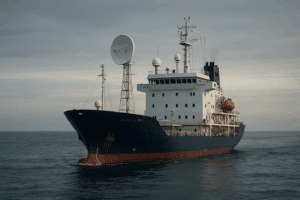Supply chain visibility is like the foundation of a well-built house, it supports the entire structure of logistics and operations. Without it, companies risk inefficiencies, missed opportunities, and vulnerabilities to unforeseen challenges. Research gathered from over 30 top supply chain executives reveals that businesses with enhanced visibility managed to navigate past disruptions without revenue loss and achieved higher profitability. However, only 22% of global companies have attained this level of visibility, leaving the majority vulnerable to operational risks. This underscores that enhancing visibility is essential, not just a competitive edge, to protect against vulnerabilities in today’s dynamic supply chain landscape.
How powerful is Supply Chain Visibility?
Understanding Supply Chain Visibility
Supply Chain Visibility (SCV) covers a wide range of issues. Are you aware of your product’s location at all times, its shipping schedule, and its expected arrival? Do you have complete visibility across your entire supply chain, from supplier to end customer? This is why understanding supply chain visibility is crucial.
Definition and its Importance
The ability to track and monitor the movement of products, materials, and data throughout the entire supply chain is Supply Chain Visibility. This involves real-time data collection, tracking, and sharing of information on goods, materials, and finances as they flow from raw material suppliers to end customers.
Supply Chain Visibility is vital for the following reasons:
Improved Decision-Making
Through real-time access to data, companies can monitor the movement of goods and materials, enabling them to respond quickly to changes or issues, leading to an effective decision-making.
Enhanced Efficiency
It also improves efficiency by optimizing inventory management and reducing operational costs. With full visibility, the firms can better plan their inventory, avoid stockouts or overstocking, and streamline their operations, boosting overall productivity.
Stronger Stakeholder Collaboration
Enhanced visibility fosters better coordination among stakeholders. When all parties, including suppliers, manufacturers, and logistics providers, have access to the same information, it helps create a more collaborative and synchronized supply chain.
Proactive Risk Mitigation
Visibility also helps mitigate risks by identifying disruptions early. With live data, companies can detect issues before they escalate, allowing for quicker responses and minimizing the impact on operations.
Customer Satisfaction
With accurate tracking and proactive communication about delivery schedules or potential delays, companies can provide better service, ensuring customers receive their orders on time.
Analytics and Reporting
It enables analytics and reporting by transforming raw data into actionable insights. Businesses can analyze trends, identify inefficiencies, and predict demands, using data-driven tools to optimize operations. Comprehensive reporting enhances transparency and supports proactive decision-making to enhance forecasting and drive continuous improvement.
Strategies for End-to-End Visibility
Online shopping has become an integral part of daily life, as highlighted by the latest E-Commerce Monitor study. Over 50% of respondents reported making online purchases at least twice a month. As consumer expectations for faster, more reliable deliveries continue to rise, companies are increasingly focused on ensuring end-to-end visibility across their supply chains.
Mapping the Supply Chain Network
Mapping the supply chain network refers to the process of visualizing and documenting the entire flow of goods, information, and resources from raw material suppliers to end customers. This includes identifying all the stakeholders, such as suppliers, manufacturers, distributors, retailers, and logistics providers, and understanding the routes, processes, and technologies involved in the supply chain.
Mapping helps businesses better view their operations, identify potential risks, optimize processes, and improve decision-making by ensuring all connections and dependencies are understood.
Advanced Analytics and Monitoring Tools
When it comes to enhancing supply chain visibility, predictive analytics and monitoring technologies are essential, offering valuable insights into future trends and potential disruptions. Using historical data and current trends, these tools enable companies to anticipate fluctuations in consumer demand, adjust schedules, and optimize inventory levels.
They enable more accurate forecasting, which improves the planning process and helps streamline operations, from production to delivery. Moreover, real-time monitoring helps identify inefficiencies and bottlenecks, allowing for quick corrective actions. This proactive approach reduces operational costs and ensures better synchronization across all stages.

Case Studies: Successful Supply Chain Projects
In this section, we explore real-world examples of companies that have successfully enhanced their supply chain management through improved visibility and advanced technologies.
Maersk
The global leader in container shipping adopted a real-time tracking system to enhance visibility across its vast network. Through digital technologies, Maersk improved route optimization, reduced delays, and lowered operational costs. The system enabled better compliance with international shipping regulations, improved accuracy in delivery schedules, and provided actionable insights that helped streamline logistics, boosting supply chain performance on a global scale.
Unilever
The British multinational fast-moving consumer goods company integrated advanced digital systems to monitor its supply chain from raw material sourcing to customer delivery. Through real-time data collection and predictive analytics, the foremost transnational company optimized production schedules, reduced waste, and improved overall supply chain efficiency. This enhanced visibility ensures compliance with environmental standards and drives responsible sourcing practices across the company’s global network.
Siemens
The leading European manufacturing company implemented a digital supply chain solution to improve visibility in its European operations. Through real-time data tracking and predictive analytics, Siemens was able to optimize production planning, reduce lead times, and cut operational costs. The improved visibility allowed the company to better forecast demand, enhance inventory management, and ensure compliance with European Union (EU) regulations, driving both efficiency and sustainability in its supply chain operations.
Technology's Role in Supply Chain Transparency
The move from traditional to digital supply chains is transforming logistics. Traditional models rely on outdated data and isolated systems, limiting visibility and slowing responses. Digital supply chains use technologies like AI, IoT, and blockchain to enable real-time data sharing, predictive insights, and improved transparency, allowing companies to adapt quickly to changes.
IoT and Real-Time Tracking Solutions
IoT (Internet of Things) devices are smart sensors that connect to the internet to collect and share data, while GPS (Global Positioning System) tracking provides precise location information for objects in transit. Together, these technologies revolutionize supply chain management by offering real-time visibility into shipments. IoT devices monitor variables like temperature, humidity, and shock levels, ensuring sensitive goods are handled properly. GPS tracking pinpoints the exact location of shipments, enabling proactive responses to delay or route changes. With these advancements, the firms gain actionable insights for better planning and decision-making.
Blockchain for Secure and Transparent Transactions
Discovered in 2008 as the foundation of cryptocurrency, blockchain is now revolutionizing supply chain management by enhancing traceability and security. This decentralized ledger technology records transactions across multiple nodes, ensuring data transparency and tamper-proof records. In supply chains, blockchain creates an unalterable log of a product’s journey from origin to end consumer.
By tracking every transaction, it enables real-time traceability, assuring product authenticity and compliance with industry standards. Blockchain also strengthens security by minimizing fraud and unauthorized alterations, as its distributed nature makes hacking nearly impossible. From verifying ethical sourcing to ensuring food safety, its applications streamline operations, build trust among stakeholders, and drive accountability, transforming supply chains into more transparent and secure systems.
AI for Predictive Supply Chain Optimization
The invention of Artificial Intelligence (AI) has revolutionized supply chain management by improving transparency and efficiency. AI analyzes vast amounts of data to forecast demand accurately, enabling better inventory control and production planning. Machine learning algorithms optimize logistics by identifying efficient routes and reducing transportation costs. With AI-powered tools, businesses gain real-time insights into shipment status and potential disruptions, enhancing visibility across the supply chain.
Predictive analytics enable proactive decision-making, helping mitigate risks and streamline operations. These advancements foster seamless collaboration among stakeholders, ensuring a more agile and efficient supply chain while reducing costs and enhancing overall performance.
Sinay Safecube: Real-Time Supply Chain Tracking
As a specialist in data collection, real-time monitoring, and environmental impact assessments, we understand the need for seamless, real-time tracking in today’s complex supply chains. Our platform, Safecube, transforms the way businesses manage their logistics by offering end-to-end container tracking, precise geolocation, and visual mapping across sea freight and multimodal trade routes. With access to a vast database of over 80 million containers and 180 shipping lines, we eliminate blind spots and ensure full visibility throughout the entire journey. Safecube empowers our clients to make informed decisions, streamline operations, and navigate shipping uncertainties with ease, all in one sleek, intuitive platform.
Transforming Supply Chains for the Future
As we enter a new era of technological transformation, the way businesses operate and manage their supply chains is evolving rapidly. Supply chains are the backbone of countless industries, and the ability to effectively monitor and optimize every element of this intricate system is becoming more critical than ever. With the right tools and technologies, companies now have the strategic capability to track, analyze, and adjust every component of their supply chains in real-time.
FAQ about supply chain visibility
Supply chain visibility refers to the ability to track and monitor all processes, inventory, and shipments throughout the supply chain in real-time. It provides critical insights into the movement of goods, resources, and data across all stages.
Supply chain visibility improves efficiency, reduces delays, and enhances decision-making. It helps businesses respond proactively to disruptions, meet customer expectations, and ensure transparency in operations.
Advanced tools like IoT sensors, blockchain, and data analytics enable real-time tracking and secure data sharing. These technologies provide accurate, up-to-date insights into supply chain operations, reducing inefficiencies and risks.
Full visibility helps businesses optimize costs, improve delivery times, reduce inventory risks, and ensure compliance with regulations. It also fosters customer trust by providing transparency and reliability in supply chain operations.


